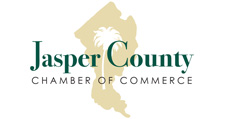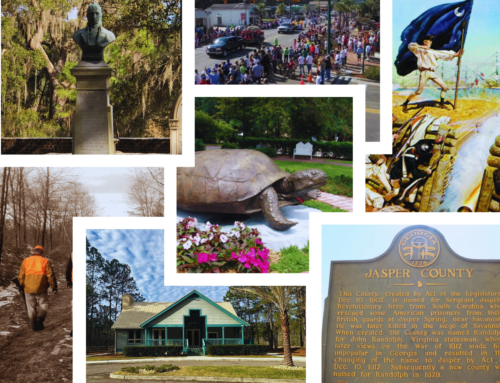The South Carolina Lowcountry is a place brimming with history and charm. Jasper County – nestled between the scenic Lowcountry and the bustling city of Savannah – is home to several breathtaking, historic churches that are worth exploring.
Whether you are a history enthusiast, an architecture lover, or simply seeking a serene spiritual experience, a visit to these churches will undoubtedly leave a lasting impression. A journey through them is a testament to the rich history and spiritual heritage of this enchanting region.
Each of these architectural marvels tells a unique story, inviting you to immerse yourself in the tapestry of the past. So, lace up your walking shoes, pack your camera, and embark on a memorable adventure through the historic churches of Jasper County and surrounding areas – where history, beauty, and spirituality intertwine.
Church of the Holy Trinity
Located in the Grahamville area, you will find the Church of the Holy Trinity. The current church was built in 1858. Two earlier versions dating as far back as 1824 were built as chapels of ease for planters using the area as a summer retreat village. The live oaks that surround the building were planted by the women of the congregation in the 1800s.
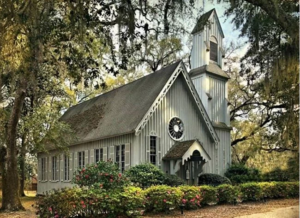
This stately Episcopal Church was spared on General Sherman’s march through the area simply because it had been used as a headquarters for Federal troops during the Civil War. The church now has a recently refurbished interior with a more modern parish house nearby which simulates the Gothic design of the church building. The church Bible, probably stolen during the Civil War, was returned to Grahamville in 1928. A New York music publisher had discovered it in an attic.
Euhaw Baptist Church
Also located in the Grahamville area is the Euhaw Baptist Church. Although the existing building is relatively new, the original church was organized in 1751 as part of the Charles Town Baptist Association. Located on Euhaw Creek, a few miles from the present site, the original building fell into disuse as families began moving to Grahamville, and in 1865 it was destroyed by Union troops.

This church is the second oldest Baptist organization in the South. Originally located on Edisto Island, the first structure was built in 1686. This church split, and relocated to the Grahamville village, which is now a part of Ridgeland. Euhaw means “Indian Lands.” The church was named in their honor. The present structure, built in 1907 has beautiful twin towers on each side of the entrance.
Robertville Baptist Church
Black Swamp Baptist Church was organized in 1781, but its church building was burned by Sherman’s troops during the Civil War. About three years later the Black Swamp congregation bought the present-day structure, then a 20-year-old Episcopal Church building, and moved it from Gillisonville.

The white frame building has Greek Revival architectural features. Black Swamp Baptist was renamed Robertville Baptist in 1934 to honor the native Robert family, one member of which was the author of Robert’s Rules of Order. The interior pews even date all the way back to 186.
Gillisonville Baptist Church
Gillisonville was the governmental seat of Beaufort District when the church building was completed in 1838. The pulpit, in fact, had once been the judge’s seat. The pulpit was repurposed and moved from the neighboring Coosawhatchie courthouse. It is still in use today.
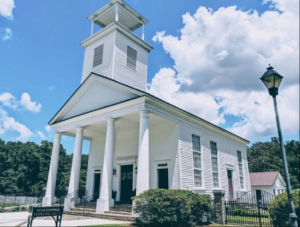
All that has been changed on this simple but beautiful church is the steeple, which was demolished by a Union cannon during the Civil War. Box pews and a slave gallery in the rear remain today. Union troops used the church as a headquarters during the war, and one of the old Communion plates still used today is inscribed: “War of 1861-2-3-4. Feb. 1865 This done by a Yankee soldier.”
Old Sheldon Church Ruins
Perhaps the most beautiful and interesting site is the Old Sheldon Church Ruins. Formerly known as Prince William Parrish Church, Old Sheldon Church Ruins is known to be the first attempt in America to create a Greek Temple style of architecture. The church was built sometime between 1745-1753. The church interior was completed, and the first services were held in 1757.
Much of the structure has long been devastated, but the remaining brick shell and columns stand the test of time. All columns and walls have remained intact for 276 years.
This grand chapel of ease stood as a symbol of the wealth that was being accumulated around the area. After completion, it was thought of as the finest country church in the United States. This church is the first example of a temple-form neoclassical building in America. It became a prototype of Greek revival architecture that became characteristic throughout the antebellum south.
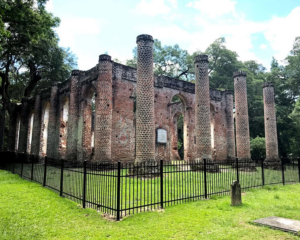
The church was a political and military center during the Revolutionary War. Governor William Bull was a founding member and his plantation bordered the church grounds. The Bull family vault in the church yard was used to conceal arms and ammunition. The church was burned by General Augustine Prevost’s British troops in May 1779, and it was rebuilt from the remaining walls in 1825.
It was originally thought that the church was burned again during Sherman’s March to the Sea at the end of the Civil War. While the church was again destroyed, a letter dated February 3, 1866 by Milton Leverett states, “Sheldon Church not burnt. Just torn up in the inside but can be repaired.”
It is now believed that the church was gutted by locals who were in search of building materials to rebuild their own war-devastated homes. After this destruction, the church was abandoned and left to ruin.The building was entered onto the National Register of Historic Places on October 22, 1970.
The site is owned and maintained by the Parish Church of St. Helena in Beaufort. The ruins are a beautiful feature set amongst ancient live oaks dripping in Spanish moss, and old graves of members past. Governor Bull is buried here in a place of honor in front of the interior altar. Today the ruins are surrounded by fencing to protect the historic site.
